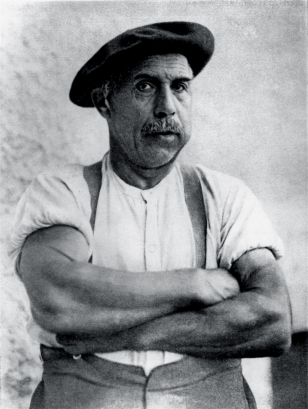| Umělec magazine 2008/1 >> Wölfli"s Universe | List of all editions. | ||||||||||||
|
|||||||||||||
Wölfli"s UniverseUmělec magazine 2008/101.01.2008 Hana Tanimura | review | en cs de es |
|||||||||||||
|
There is a fine line between insanity and genius, though it sometimes takes something extraordinary to remind us of it. The works of Adolf Wölfli (1864-1930), a Swiss artist who created thousands of drawings while incarcerated in a mental institution, present a window into the mind of a man who straddled that line. Formally, Wölfli was a schizophrenic with pedophilic tendencies. Informally, he was a creative genius and a master storyteller.
Once shunned as a menace to society, Wölfli is now regarded as one of the most important representatives of Art Brut. A large selection of his drawings, collages, texts and musical compositions are currently on display at the Kunstmuseum in Bern, Switzerland, as part of a retrospective exhibition. Wölfli’s life was a difficult one. Orphaned at the age of nine, young Wölfli was shuffled around several farms as a child laborer where he suffered various forms of abuse. Finally, in 1890, he was arrested and committed to the Waldau Mental Asylum outside of Bern for the attempted sexual assault of three young girls. The next 40 years of his life were spent at Waldau, where he died from intestinal cancer at the age of 66. But Wölfli’s artwork is surprisingly nonviolent and innocent for someone who experienced so much violence and essentially had his own innocence stolen away. His life work – and the focus of this retrospective – is a 25,000 page narrative in which he reinvents his childhood self as the world-traveled adventurer Doufi (Wölfli’s childhood name), and his future as the glorified savior, St. Adolf II. Unlike the works of his “Outsider” contemporary Henry Darger (1892-1973), there is a good humor to Wölfli’s artwork that, when coupled with knowledge of his real life, lends a palpable sadness to his fantasy. In Rings of the Ocean and the Island (1914), a procession of music notes forms a ring around a star shape, within which there is another ring, and another, ad infinitum. The spiraling visuals are disorienting, but there is a sense of security in the continuity and resolution of each concentric layer. The layers exist on their own, with their own themes and imagery, but each is also inextricably linked to the next by way of narrative flow. In the first chapter of his autobiographical oeuvre, From the Cradle to the Grave, Wölfli describes his narrative as a collection of “manifold journeys, adventures, ac-ci-dents, hunts and other experiences of someone lost, on and around the whole globe.” But he always seems to find his way. From the Cradle to the Grave was completed in 1912, at which point Wölfli began working on his Geographic and Algebraic Books: a collection of stories in which the artist buys up the cities he visited earlier on in his narrative and rebuilds them according to his design. With a comprehensiveness similar to that of Stéphane Miroux – the protagonist of French director Michel Gondry’s The Science of Sleep – Wölfli remodels all aspects of society including urban landscapes, social institutions, public enterprises and traffic systems. His self-assigned task was to imagine the step-by-step creation of a better world. In the last chapter of the Geographic and Algebraic Books, Wölfli – by now reinvented as St. Adolf II – steps back to admire his creations and comments that “From this point the geographic region is structured and celebrated in music.” It is certainly true that reading a work of Wölfli’s using pictorial cues alone is a challenge, and for those of us who can’t read his native Swiss-German, Wölfli’s works can look like a series of puzzles to be decoded like hieroglyphs. But there is more to decode than images and text: there’s the artist’s strange, six-lined musical notations that have fascinated psychiatrists, artists, and musician for generations. His music is probably best described as “skittish;” like his drawings, Wölfli’s songs are “all-over” and meticulously organized at the same time. Each composition stands on its own, but is also composed to fit a specific point in his narrative and is connected in line with his other works by a continuous rhythm that also permeates his writings. His songs are mostly adaptations of waltzes and polkas strongly rooted in the folkloric traditions of Switzerland, and although the trumpet-piano medleys aren’t likely to be everyone’s cup of tea, they have an undeniable cult following and have hugely contributed to the popularization of “Musique Brut.” Visitors to the Kunstmuseum have the rare opportunity of listening to some of Wölfli’s compositions, which he is said to have played on a handmade paper trumpet. As a wonderful accompaniment to the Wölfli retrospective, the Kunstmuseum has gathered works by other patients at the Waldau clinic and displayed them in two rooms adjacent to Wölfli’s main showcase. Together, these peculiar exhibitions serve as affecting reminders of the fragilities and strengths of the human mind, ultimately proposing a model of hope and renewal in the face of great adversity.
01.01.2008
Recommended articles
|
|||||||||||||












Comments
There are currently no comments.Add new comment